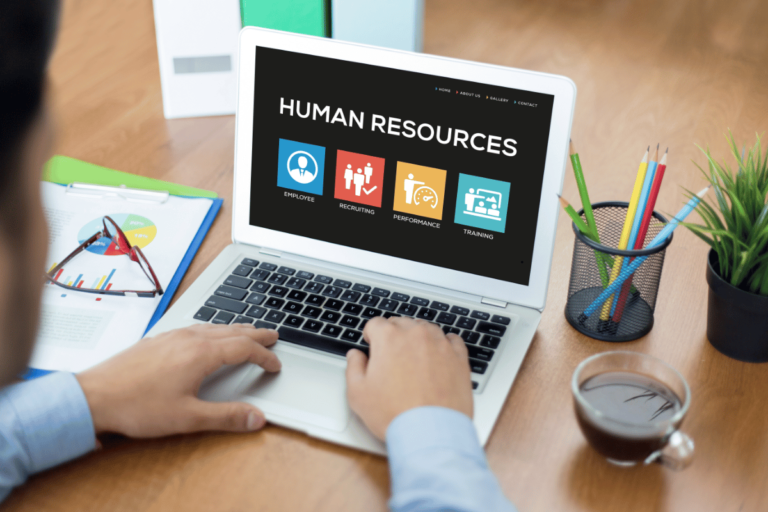A Guide to HR Employee Recognition Programs
Welcome to our comprehensive guide on HR Employee Recognition Programs. In today’s competitive business landscape, organizations recognize the importance of appreciating their employees’ efforts and accomplishments. Employee recognition programs play a crucial role in boosting morale, enhancing employee engagement, fostering a positive company culture, and driving business success.
Key Takeaways:
- Employee recognition programs are essential for boosting morale and improving employee engagement.
- These programs contribute to a positive company culture and drive talent acquisition and retention.
- Best practices for employee recognition programs include genuine, inclusive, and timely recognition.
- Starting an employee recognition program requires determining criteria, providing tools, and gaining senior leadership support.
- An impactful program is consistent, visible, and tailored to individual preferences.
Now, let’s dive deeper into what employee recognition programs are, why they are important, best practices for their implementation, and how to design them based on employee feedback. We will also explore employee recognition programs in the new world of work and how to measure their impact. Additionally, we’ll provide examples of companies with great employee recognition programs and discuss the importance of considering generational differences in recognition.
By the end of this guide, you will have a solid understanding of HR Employee Recognition Programs and be equipped with the knowledge to create an effective program that enhances your organization’s culture and success.
What are Employee Recognition Programs?
Employee recognition programs are initiatives implemented by organizations to acknowledge and reward the contributions and accomplishments of their employees. These programs play a crucial role in boosting morale, enhancing employee engagement, and fostering a positive work environment.
There are various types of employee recognition programs that organizations can adopt to show appreciation for their employees’ hard work and dedication. Some common types include:
- Employee of the Month Programs: Recognizing outstanding employees on a monthly basis.
- Length of Service Awards: Celebrating employees who have been with the company for a significant period.
- Department or Team-Specific Events: Recognizing the achievements of specific teams or departments.
- Small Personal Gifts: Providing small tokens of appreciation, such as personalized notes or gift cards.
- Thank You Cards: Sending handwritten thank you cards to express gratitude.
- Spot Bonuses: Offering surprise monetary rewards for exceptional performance.
- Company Celebrations: Organizing events or gatherings to celebrate milestones, achievements, or special occasions.
It is essential for organizations to tailor these recognition programs to the specific needs and preferences of their employees. Each individual has unique preferences and motivators, so it’s important to create a diverse and comprehensive program that encompasses various forms of recognition.
Employee of the Month Programs
Employee of the month programs are a popular type of recognition program. They involve selecting one outstanding employee each month and publicly acknowledging their achievements. This type of program not only recognizes top performers but also serves as motivation for others to strive for excellence.
“Employee recognition programs are invaluable for boosting employee morale and creating a positive work culture.” – Jane Smith, HR Manager
By implementing employee recognition programs, organizations can effectively show appreciation for their employees’ hard work and dedication. These programs contribute to a positive work culture, improve employee engagement, and ultimately lead to better overall organizational performance.
Continue reading to discover the importance of employee recognition programs and how they can benefit your organization.
The Importance of Employee Recognition Programs
Employee recognition programs play a crucial role in organizations for a variety of reasons. They bring numerous benefits to both employees and the overall business. Let’s explore why these programs are essential for fostering a positive work environment and driving success.
Improved Morale and Job Satisfaction
Recognizing and appreciating employees’ hard work and achievements boosts their morale and job satisfaction. When employees feel valued and acknowledged for their contributions, it positively impacts their motivation, attitude, and overall happiness at work. This, in turn, cultivates a positive and supportive company culture.
Increased Employee Engagement
Employee recognition programs have a direct correlation with increased employee engagement. Engaged employees are more connected to their work, committed to their organization’s goals, and willing to go the extra mile to achieve success. Regular recognition and rewards fuel a sense of pride and ownership, driving employees to perform at their best.
Reduced Turnover and Recruitment Costs
When employees feel recognized and appreciated, they are more likely to stay loyal to their organization. This reduces turnover rates and minimizes the costs associated with recruiting and training new employees. By investing in employee recognition programs, companies can retain talented individuals, fostering long-term growth and stability.
Positive Company Culture
Recognition programs contribute to building a positive company culture by promoting camaraderie, teamwork, and mutual respect. They encourage a collaborative and supportive environment where employees feel motivated to help each other succeed. This inclusive culture fosters innovation, creativity, and high performance throughout the organization.
Driving Talent Acquisition and Retention
Employee recognition programs act as powerful tools for attracting and retaining top talent. In today’s competitive job market, candidates seek companies that prioritize employee well-being and appreciation. When potential hires see that an organization values and recognizes its employees, they are more likely to choose it as their preferred workplace.
Overall, employee recognition programs have a far-reaching impact on various aspects of the business. They enhance morale, drive employee engagement, reduce turnover, foster a positive company culture, and contribute to talent acquisition and retention. By implementing effective recognition programs, organizations can create a thriving and successful work environment.
| Benefits of Employee Recognition Programs |
|---|
| Improved morale and job satisfaction |
| Increased employee engagement |
| Reduced turnover and recruitment costs |
| Positive company culture |
| Driving talent acquisition and retention |
Best Practices for Employee Recognition Programs
Employee recognition programs are a powerful way to acknowledge and appreciate the hard work and achievements of your employees. However, to ensure the success of these programs, it’s important to follow best practices that create a genuine, inclusive, and impactful recognition experience.
Here are some best practices for employee recognition:
- Genuine recognition: Recognition should be sincere and authentic, highlighting specific accomplishments and their impact. This helps employees feel valued and appreciated for their contributions.
- Inclusive recognition: Acknowledge and celebrate the achievements of all employees, regardless of their role, level, or background. Inclusivity promotes a sense of belonging and fosters a positive company culture.
- Specific recognition: Be specific about what you’re recognizing employees for. Instead of a general “good job,” highlight the specific actions, behaviors, or results that deserve recognition. This gives employees clear feedback and encourages them to continue excelling.
- Timely recognition: Recognize achievements as close to the event or accomplishment as possible. Timely recognition shows employees that their efforts are noticed and appreciated in the moment, increasing the impact of the recognition.
- Frequent recognition: Create a culture of ongoing recognition by encouraging regular acknowledgement of accomplishments. Frequent recognition keeps employees motivated, engaged, and appreciated throughout their journey.
- Intentional recognition: Make recognition a deliberate and purposeful practice. Implement structured programs, such as employee of the month or peer-to-peer recognition, that encourage meaningful recognition opportunities.
- Public recognition: Publicly recognize employees in team meetings, company newsletters, or social media platforms. Public recognition not only celebrates the employee’s achievements but also inspires and motivates others.
Implementing these best practices will help create a robust employee recognition program that boosts morale, engagement, and overall organizational success. Remember to tailor the program to the individual preferences and needs of your employees.
Senior leadership should demonstrate commitment and support for the program, and effective communication and training should be provided to all employees. Additionally, choosing the right partner to assist in implementing and managing the program can further enhance its impact.
How to Start an Employee Recognition Program
Starting an employee recognition program requires careful planning and implementation. Follow these key steps to create a successful program that aligns with your organization’s purpose and values:
- Determine the criteria for recognition: Clearly define the behaviors, achievements, or milestones that will be recognized. Ensure that they reflect your company’s values and goals.
- Provide tools and resources: Equip your employees with the necessary tools and resources to engage in recognition activities. This could include digital platforms, suggestion boxes, or structured nomination processes.
- Communicate, educate, and inspire: Develop a communication plan to create awareness and excitement around the program. Educate employees on how to participate and recognize their peers. Inspire them with success stories and examples of impactful recognition.
- Gain senior leadership commitment: Secure buy-in and support from senior leaders within your organization. Their commitment and involvement will demonstrate the program’s importance and set an example for others.
- Choose the right partner: Consider partnering with a specialized recognition platform or consultant to help implement and manage the program effectively. Their expertise and support can streamline the process and ensure a positive experience for all participants.
By following these steps, you can lay the foundation for a successful employee recognition program that fosters a culture of appreciation and enhances employee engagement.
What Makes an Impactful and Successful Employee Recognition Program?
An impactful and successful employee recognition program is designed to consistently acknowledge and appreciate the contributions of employees. It should be visible, tailored to individual preferences, and provide specific recognition for the actions and accomplishments of employees.
Consistency: A key characteristic of a successful employee recognition program is consistency. Recognition should not be a one-time event but rather a regular practice. By consistently recognizing employee achievements, organizations foster a culture of appreciation and motivate employees to continue their outstanding work.
Visibility: For an employee recognition program to have a meaningful impact, it needs to be visible. Recognition should reach the intended recipient, whether through private or public channels. This visibility reinforces the message that their efforts are valued and appreciated by the organization as a whole.
Tailored to Individual Preferences: Effective recognition programs take into account the unique preferences of each employee. Tailoring recognition to individual preferences ensures that it resonates with employees on a personal level, making them feel genuinely valued and recognized for their contributions.
Specificity: Adding specificity to recognition further enhances the impact of the program. By highlighting the specific action or accomplishment being recognized and its impact, employees gain a clear understanding of how their efforts contribute to the success of the organization. This specific feedback motivates employees and encourages them to continue performing at their best.
To illustrate the impact of an employee recognition program, consider the following table:
| Company | Recognition Program Details | Impact |
|---|---|---|
| Company A | Monthly awards ceremony to recognize top performers | Increased employee motivation and engagement, enhanced performance |
| Company B | Peer-to-peer recognition platform with personal messages | Boosted morale, strengthened team collaboration |
| Company C | Annual retreat to honor long-serving employees | Improved employee retention, heightened loyalty |
In conclusion, an impactful and successful employee recognition program should be consistent, visible, and tailored to individual preferences. Adding specificity to recognition further enhances its effectiveness. By implementing such a program, organizations can significantly boost employee morale, engagement, and overall performance, leading to greater success and satisfaction in the workplace.
Companies with Great Employee Recognition Programs
Some companies have established excellent employee recognition programs that prioritize regular and meaningful recognition, integrating it into their organizational culture and values. These companies understand the importance of acknowledging and appreciating their employees’ hard work and achievements. Here are a few examples of companies with outstanding employee recognition programs:
“Patagonia” utilizes digital feedback and actively encourages employees to request feedback, ensuring that recognition is a two-way street.
“Amazon” has an annual “Just Do It” award program, designed to recognize and celebrate employee innovation, which fosters a culture of creativity and excellence.
“Qualtrics” aligns its recognition initiatives with its core values, emphasizing the importance of recognizing behaviours and actions that support the company’s mission and culture.
These companies understand that employee recognition programs contribute to boosting employee morale, fostering a positive work environment, and driving overall performance. By implementing innovative and personalized approaches to recognition, these companies have established themselves as leaders in employee appreciation.
By showcasing exceptional employee recognition programs, these companies serve as inspirations for other organizations looking to enhance their employee recognition initiatives. Recognizing and appreciating employees’ contributions not only motivates and engages them but also creates a supportive and rewarding workplace culture.
Designing an Employee Recognition Program Based on Employee Feedback
When it comes to designing an employee recognition program, it is crucial to prioritize employee feedback and preferences. By listening to your employees and understanding their needs, you can create a program that resonates with them and drives engagement.
Frequent and intentional communication is key in the design process. Utilize existing tools such as email, Slack, and team video calls to gather feedback and keep employees informed about the program’s progress. This communication helps build transparency and trust, making employees feel valued and involved.
Empowering employees to recognize each other is another effective strategy. By allowing employees to appreciate their colleagues’ efforts, you foster a culture of appreciation and teamwork. Encouraging visibility of recognition, such as through a dedicated recognition platform or a shared gratitude board, enhances the program’s impact and creates a positive work environment.
Many companies are now opting for an online employee recognition platform to streamline the process and ensure every employee’s efforts are acknowledged in real-time.
It is also important to celebrate key moments in the employee journey. Whether it’s recognizing work anniversaries, major accomplishments, or significant milestones, acknowledging these events shows employees that their contributions are valued and appreciated. Consider organizing small gatherings or virtual events to commemorate these moments, fostering a sense of belonging and camaraderie.
Non-monetary recognition can be just as impactful as financial rewards. Personalized thank you notes, public acknowledgments, or meaningful gestures can go a long way in making employees feel valued. By tailoring recognition to individual preferences and circumstances, you can create a program that truly resonates with your employees.
“Recognition is the greatest motivator.” – Gerard C. Eakedale
While financial rewards have their place, genuine recognition that aligns with employees’ values and aspirations can be a powerful motivator. By acknowledging the efforts and achievements of your employees in a specific, relevant, and timely manner, you can create a recognition program that truly drives engagement and boosts morale.
Example of a Non-Monetary Employee Recognition Program
| Recognition Category | Description |
|---|---|
| Unsung Hero Award | Recognizes employees who consistently go above and beyond their job responsibilities, showcasing exceptional dedication and commitment to their work. |
| Innovation Excellence | Recognizes employees who have introduced innovative ideas or processes that have significantly contributed to the organization’s growth and success. |
| Outstanding Team Player | Recognizes employees who consistently demonstrate a strong collaborative spirit, supporting their teammates and promoting a positive work environment. |
| Customer Champion | Recognizes employees who consistently go above and beyond to deliver exceptional customer service, ensuring customer satisfaction and loyalty. |
Remember, the key to designing an employee recognition program is to make it meaningful, inclusive, and aligned with your employees’ preferences. By incorporating their feedback, celebrating their achievements, and fostering a culture of appreciation, you can create a program that motivates, engages, and retains your valuable talent.
Employee Recognition Programs in a New World of Work
As the world of work undergoes significant changes, employee recognition programs must also adapt to the new reality. With remote work and hybrid work models becoming more prevalent, organizations need to implement flexible and virtual methods of recognition to ensure employees feel valued and appreciated, regardless of their physical location.
Leveraging digital tools and platforms becomes crucial in this new world of work. These technologies enable organizations to implement recognition programs that can be accessed and utilized by employees remotely. Whether it’s a digital platform for peer-to-peer recognition or virtual events and celebrations, the use of technology allows for seamless communication and engagement between team members.
However, adapting to the new world of work goes beyond implementing digital solutions. It is equally important to understand the individual preferences and needs of employees. Taking the time to personalize recognition efforts and tailor them to each employee’s unique circumstances and work environment helps foster a sense of connection, engagement, and motivation.
Employee recognition programs in the new world of work should prioritize strategies that maintain the sense of community and connection among team members. Creating virtual team-building activities, organizing virtual coffee breaks or happy hours, and encouraging regular communication through video conferences or instant messaging platforms are effective ways to foster a strong sense of belonging and support among distributed teams.
To illustrate the importance of employee recognition programs in a new world of work, consider the following quote:
“In a remote work environment, where face-to-face interactions are limited, employee recognition becomes even more crucial. It helps create a sense of togetherness and appreciation, motivating employees to perform their best despite physical distance.” – Jennifer Miller, HR Manager at XYZ Company
Effective employee recognition programs in the new world of work require adaptability, personalization, and a focus on maintaining connection, engagement, and motivation. By leveraging digital tools, understanding individual preferences, and fostering a sense of community, organizations can ensure that recognition is not compromised in a remote or hybrid work environment.
Measuring the Impact of Employee Recognition Programs
To assess the effectiveness of employee recognition programs, it is crucial to have the right metrics and reporting in place. By measuring key performance indicators, organizations can gauge the impact of these programs and make data-driven decisions to improve them.
Key Metrics:
- Employee Satisfaction: Conducting regular satisfaction surveys allows organizations to gather feedback from employees and assess their level of contentment with the recognition initiatives in place.
- Engagement Surveys: Measuring employee engagement provides insights into how recognition programs impact employees’ connection to their work, motivation, and overall commitment to the organization.
- Retention Rates: Tracking the retention rates of recognized employees compared to non-recognized employees can help determine if recognition initiatives positively influence employee retention.
- Productivity Indicators: Analyzing productivity data, such as individual or team performance metrics, can reveal the correlation between recognition and improved productivity levels.
- Employee Feedback: Regularly collecting feedback from employees about the recognition programs enables organizations to understand their experiences, preferences, and areas for improvement.
Evaluation and Continuous Improvement:
Regularly reviewing and evaluating the employee recognition program’s performance is essential. By analyzing the collected data, organizations can identify areas of success and areas for improvement. This evaluation process allows for adjustments and enhancements to be made over time, ensuring that the recognition program remains effective and aligned with the organization’s goals.
An impactful employee recognition program should contribute to the overall success of the organization, improving employee satisfaction, engagement, productivity, and retention rates. The data-driven insights gained from measuring its impact empower organizations to make informed decisions that enhance the program and drive positive outcomes.
| Metrics | Description |
|---|---|
| Employee Satisfaction | Conduct surveys to gather feedback on employee satisfaction with recognition initiatives. |
| Engagement Surveys | Measure employee engagement levels to assess the impact of recognition programs on motivation and commitment. |
| Retention Rates | Track the retention rates of recognized employees compared to non-recognized employees. |
| Productivity Indicators | Analyze performance data to determine the influence of recognition programs on productivity levels. |
| Employee Feedback | Regularly collect feedback from employees to understand their experiences and improve the recognition program. |
Employee Recognition Programs for Different Generations
Different generations have varying preferences and expectations when it comes to employee recognition. To effectively engage and motivate employees across different age groups, organizations need to consider these differences and tailor their recognition programs accordingly.
For millennials and Gen Z workers, recognition that is linked to diversity, equity, and inclusion initiatives can be particularly impactful. These younger employees value workplaces that prioritize fairness, equality, and the celebration of diverse perspectives and backgrounds.
Furthermore, recognition programs that focus on physical and mental well-being can resonate well with employees of all generations, as promoting a healthy work-life balance and supporting personal growth are universal priorities.
By offering a variety of recognition options and opportunities, companies can ensure that all employees feel valued and appreciated, regardless of their generational background.
Creating a culture of recognition that supports the needs and preferences of diverse age groups fosters a positive work environment and strengthens employee engagement and loyalty.
Conclusion
Employee recognition programs are critical for organizations to foster a culture of appreciation and recognition. These programs play a vital role in boosting morale, engagement, and employee retention, ultimately contributing to overall organizational success. By implementing best practices and tailoring recognition programs to the preferences and needs of employees, organizations can create a positive work environment.
Regular communication, visible recognition, and timely feedback are essential elements for the success of these programs. Organizations should strive to measure the impact of their recognition efforts and make adjustments as needed to enhance effectiveness. In a constantly evolving world of work, it is important for employee recognition programs to adapt and continue prioritizing the well-being and satisfaction of employees.
By recognizing and appreciating their employees’ hard work and achievements, organizations can create a sense of belonging, foster a positive company culture, and drive innovation and performance. Employee recognition programs are an investment that yields significant returns, leading to a motivated and engaged workforce.
In conclusion, employee recognition programs are essential for organizations that aim to create a thriving and supportive work environment. By implementing these programs with thoughtful consideration of best practices, organizations can cultivate a culture where employees feel valued, appreciated, and empowered to contribute to the company’s success.







